投稿日:
更新日:
delicious! To meet the altitude of 1000m, the finest vegetables grown in the sky
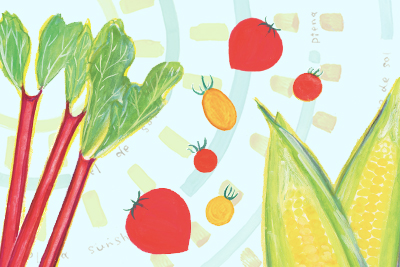
The average elevation of the entire prefecture is 1,033m. Nagano prefecture. The highest average elevation in Japan increases the temperature difference between day and night, and plenty of sunlight pours down on the open earth. Lettuce and celery, which are made using this environment, boast the highest share of the market in Japan, and their quality is also highly praised.
And these blessed conditions made the individuality of the various vegetables even more rich and delicious. This time, we will introduce some of the finest vegetables that are carefully selected, made in high altitudes over 1,000m.
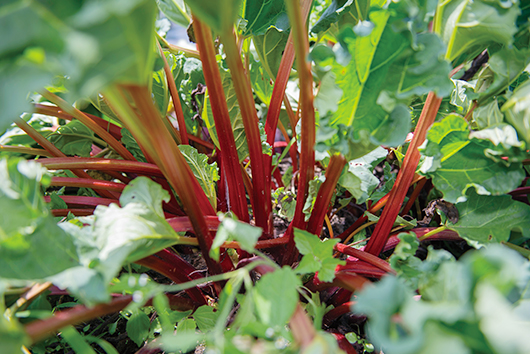
The refreshing sourness becomes addictive
Bright red rhubarb in Fujimi town
Rhubarb is a vegetable native to Siberia, with a look like a dish, and the stems are edible, and is widely used in Europe and the United States as jams, sweets, and meat dishes. Located at an altitude of 700 to 1,400m on the southern foot of Mt. Yatsugatake, the cool town of Fujimi is the mecca of rhubarb, boasting the highest production in Japan. The green one is generally known, but Fujimi Town produces rhubarb, a rare variety with a red stem that is a rare variety, taking advantage of the fact that it is a highland area with a large difference in temperature between the day and night.
It is not clear how it came to Fujimi Town, but at first some people only cultivated it for their own use. In 2006, Angel Chiyoko, who lived in the town with her British husband and raised rhubarb, became the first president of the association, and established the Fujimi Town Rhubarb Production Association, Japan's only rhubarb production association with the aim of reusing desolate reeflands and turning them into specialty products. Furthermore, in 2011, the then mayor focused on the initiative. We worked to promote rhubarb throughout the town, including operating at major department stores in the metropolitan area. The number of members now increases to around 110, producing nearly 30 tons a year.

Kawai Hiroto, the union president, is a former newspaper reporter, and while he was interviewed for red rhubarb, he was fascinated and began cultivating it.
"There are red rhubarb in other regions, but it is said that none of them are as red as this. The best time to harvest is June to early July and September to October, and the sourness fades away, especially in early autumn, and the colour becomes even more beautiful," says Kawai. The red color is so beautiful that it is truly spectacular. Red rhubarb has a fruity acidity and is rich in dietary fiber, potassium, anthocyanins, and has been attracting attention as a health food in recent years. Why not enjoy a variety of flavors at home that make use of its beauty and sourness?
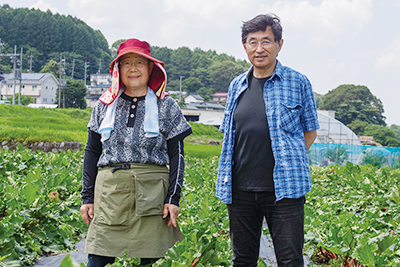
Rhubarb cultivation has contributed to maintaining the health of the elderly and creating a sense of purpose in life through maintenance such as grass cutting. "Even if you make your own, you'll be captivated by the beauty of the red," says Kawai (right) and union member Kobayashi Ichiko (left). Red rhubarb is vulnerable to the strong summer light and heat, and the red stems fade away, so the Fujimi Town Rhubarb Production Association apparently will stop shipping in August. As a result, autumn will become even more reddish and sour, and shipping will reach its peak.
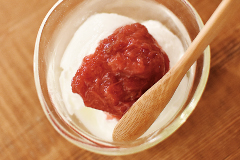
A-Coup direct sales outlets and roadside stations in townShinshuIn addition to Tsutakijuku, it is sold at Tateshina Jiyu Farm, a direct sales store in Hara Village, in the neighboring village, and more than 90% of the purchasers are women. Cut the rhubarb cleanly washed with water into 2-3cm pieces, add sugar and simmer in a pot to make the jam easily. It can be used in a variety of ways, such as candied, lightly pickled plums, or eaten raw.
[Fujimi Town Rhubarb Production Association]
Fax 050-7515-7266
https://fujimi-aka-rhubarb.jimdo.com/
INFORMATION Ginza NAGANO It will be on sale from September to late October!
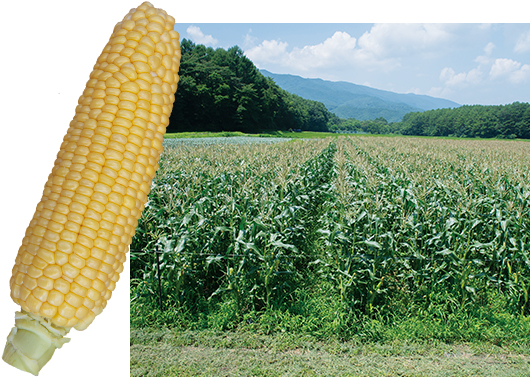
I paid particular attention to freshness
Haramura's corn is unbeatable
Hara Village is located in the southwest part of the foot of Mt. Yatsugatake, at an altitude of 900m to 1,300m. The climate is refreshing with low precipitation and low humidity throughout the year, and in recent years the number of people migrating has increased. Yatsugatake corn is grown at HAMARA FARM, a classmate Yanagisawa Takuya and Orii Yusuke, founded in 2011 by classmates who were born and raised in Hara Village. Even sweet melons are said to have a sugar content of 16 degrees, but the sugar content can sometimes exceed 20 degrees. TRUE? Thinking that, when you actually take a bite, the sweetness spreads incredibly. This high sugar content and good texture make the temperature difference between day and night due to the high altitude and long sunlight.TimesIt can be said to be the result of this.
Our most particular focus is the timing and freshness of the harvest. Corn is not sweet if it is too young, and when it is overripe, the fruit becomes hard, so each bottle is determined at the perfect timing every morning, harvest by 5am and shipped that same day. The plant is grown in about 10 fields with different altitudes of 950m to 1250m, and by sowing seeds normally three to four times a year, the harvest season is different, allowing for the long-term delivery of delicious corn, which is ready to eat, for a long period of time, from late July to mid-September.
The two hope to develop their know-how to young producers and brand them, wanting to grow them into a specialty product in the Yatsugatake Plateau area, which is in the same climate.
"We see food as one of the pleasures of sightseeing, and we would like to create a system for attracting tourists to eat Yatsugatake corn. We believe that corn is worth the trouble of coming to eat," says Orii.
With the bounty of Yatsugatake, we have grown with great care and special taste for summer.GinzaWe will also deliver it to you, so don't miss it.
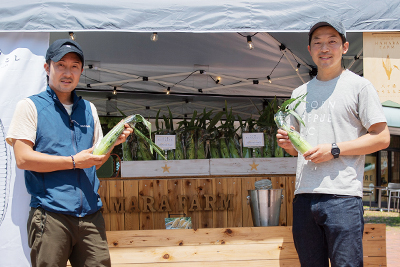
Yanagisawa (right) and Orii (left) are selling and shipping at Yatsugatake Natural Culture Garden. "It's recommended to eat raw as you start with the ingredients intact," and although it's difficult to eat raw, it's difficult to eat raw because it's not a good idea to cheat on it.
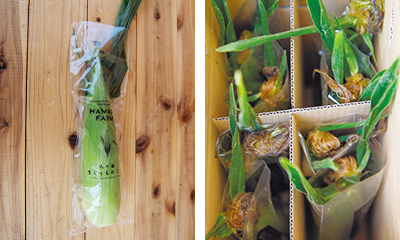
In addition, each bottle is placed in a special freshness-retaining film, and when shipped, it is cooled in the box and raised to maintain its sugar content. Sales are available at local direct sales outlets and commercial facilities, as well as at hotels in nearby Hokuto City. It is also promoted as a local specialty by having it be used as a food item at local restaurants and hotels.
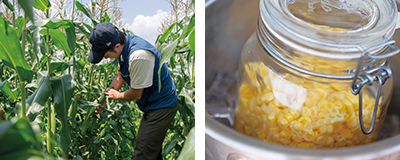
Currently, they grow two varieties, yellow and white. Of the hundreds of varieties, we have carefully selected varieties that are suitable for cultivation at higher altitudes and have long harvest days, so it is recommended to eat raw food chilled. The fertilizer is used in cooperation with local dairy farmers and beef manure compost. The number of fellow producers has increased to around 10, all of which are young under the age of 40. Incidentally, the origin of "HAMARA FARM" is said to mean "Hara-Friends" with "MA" in the middle of the village.
[HAMARA FARM]
Nagano 13414-1 Haramura, Suwa District, Prefecture TEL 080-5145-0396
https://hamarafarm.com/
INFORMATION Ginza NAGANO It will be on sale until mid-September!
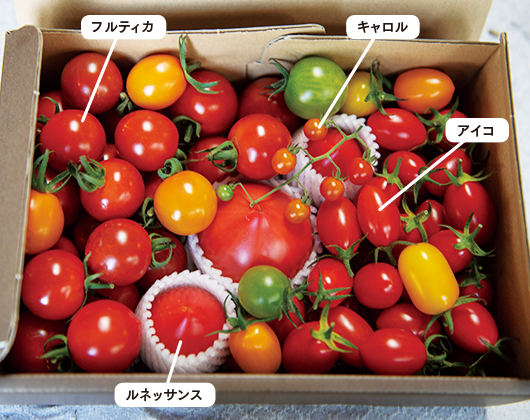
It brings out the vitality and makes it delicious
Tomatoes in Nobeyama Plateau
The Nobeyama Plateau in Minamimaki Village is located at an altitude of 1,300 to 1,450m above sea level at the eastern foot of Mt. Yatsugatake, known for its presence in Nobeyama Station, the highest JR station in Japan, and the space radio observation station at the National Astronomical Observatory. Takamizawa Kenichi, the only tomato specialty farmer in Nobeyama Plateau, is the only tomato farmer in the Nobeyama Plateau, who fully utilizes the temperature difference between the day and night and the strength of ultraviolet rays that are unique to such high-cold regions, and grows "tomatoes above the clouds" through his unique cultivation of soil that does not give fertilizer or water. This method makes tomatoes grow hard in search of water, and although the flesh itself is about one-third of the size of the same variety that can be grown on other lands, they are fruited to leave offspring, condensing the sugar content and creating a powerful flavor. The roof of the house is closed in rainy weather, so tomatoes can only be said to be able to obtain at night dew.
"Lately, high-tech cultivation that controls both temperature and humidity has become popular, but I am still focused on growing high-quality tomatoes in basic cultivation."
Takamizawa, who said this, used to work for a commercial art company in Tokyo, returned to his hometown about 30 years ago and began farming on the land of a relative who had no successors. About 15 years ago, in order to produce agricultural products that are not the main sources of the region, the lettuce and Chinese cabbage, they initially cultivated melons and watermelons, which seemed to have a somewhat similarity to the Nobeyama Plateau in Japan, but about 10 years ago, they came to the tomatoes, which are said to be their original species, native to the alpine Andes, with strong sunlight, and intense temperature differences between the day and night, and were naturally grown in the dry air and thin land. After about five years of trial and error, the cultivation method was established. Their deliciousness has spread through word of mouth, and some people come from outside the prefecture to buy it, and many people have received inquiries from famous restaurants in Tokyo.
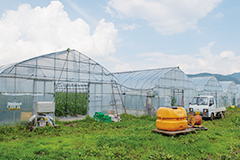
Currently, we are cultivating four varieties: Renaissance, which has a soft, sour taste and a refreshing feeling, Aiko, which has a high sugar content and an oval shape that is easy to eat, Carol, which is sweet and small and perfect for decoration, and Frutica, which has a good balance of sugar content and sourness. When you compare the taste, you will be amazed at the difference in flavor and taste that you can't imagine. This year, it's delicious, which is understandable, as there are people looking for it all the way through.GinzaYou can enjoy it at.
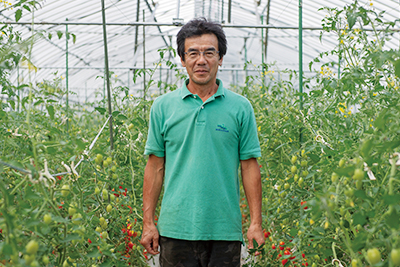
Takamizawa uses the power of nature and the ideological skills he cultivated during his time at a commercial art company to cultivate house cultivation. The ground is dry because no water is given to it, but tomatoes, which have a strong vitality, have the same amount of roots spread underground as above the ground, and do not wither. "It is natural that insects and diseases are commonplace, and if excluded, new diseases can arise. Even if you get a little sick, you don't remove the leaves, don't weed, and weed them, so we just focus on bringing out the vitality of tomatoes. The method of making them is different for each person. If they can be rooted in Nobeyama Plateau as one item," he says.
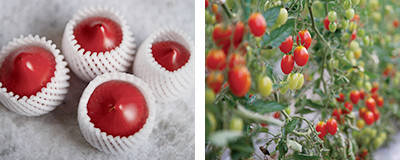
The Renaissance is a rare variety that Takamizawa praises, saying, "It has liver." Because the tip is pointed and the skin is thin, each piece will be shipped via a cushioning net. Carols are in a tiny size that is not standard, but there are apparently many chefs in Tokyo who want to decorate them. It is said to be an interesting item that changes its purpose as it changes places.
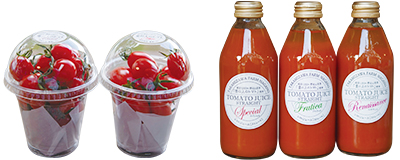
All varieties will be ripened for 3-4 days after harvest. We are also focusing on developing glossaries, such as commercializing assortments with fruit tomatoes, and using tomato juice for each varieties for non-standard products such as cracks.
[Tomatoes above the clouds]
Nagano 県南佐久郡南牧村海ノ口793 TEL 0267-98-4104
http://kumonouenotomato.com
INFORMATION Ginza NAGANO It will be on sale until mid-October!
This article is information as of August 2019.
Please note that the products we carry may have changed.















